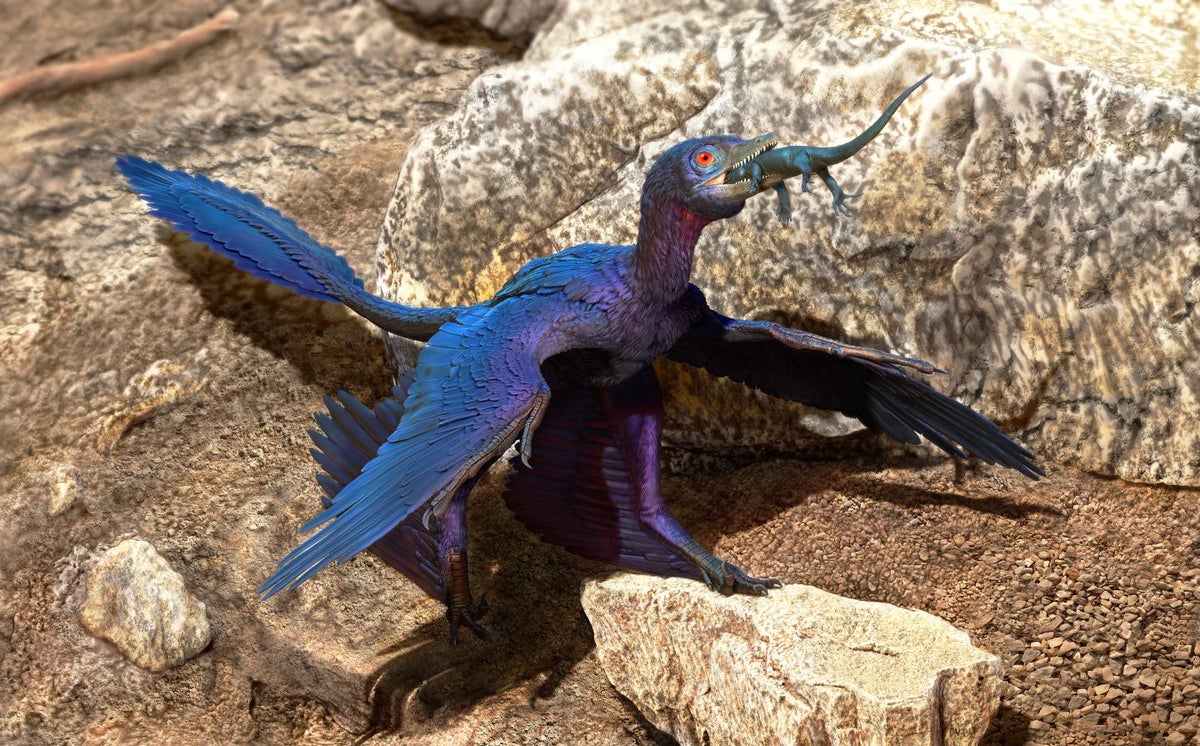
Scientists have documented one of the rarest evidence of a dinosaur having eaten a mammal from a fossil specimen unearthed in the ancient forests of what is now China.
The study, published on Wednesday in the Journal of vertebrate Paleontology, describes a small, feathered dinosaur Microraptor preserved with the foot of a small mammal inside its ribcage.
Researchers, including David Hone from the Queen Mary University of London, say the dinosaur lived during the Early Cretaceous Period around 120 million years ago in what is now China.
“This study paints a picture of a fascinating moment in time – of a dinosaur eating a mammal – even if it isn’t quite as frightening as anything in Jurassic Park,” Dr Hone said.
The findings also fit with what is seen in other small dinosaurs whose stomach contents suggest they tended to eat a variety of other animals, specifically those that were smaller than them.
Scientists say the microraptor dinosaur was the size of a crow with long feathers on its arms and legs, likely gliding from tree to tree and hunting out small animals to eat.
While the dinosaur was first described in 2000, scientists say key details of the remains of another animal inside it had been missed.
In the new study, researchers discovered the foot of an ancient mammal preserved between the ribs of the microraptor.
“It’s so rare to find examples of food inside dinosaurs so every example is really important as it gives direct evidence of what they were eating,” Dr Hone said in a statement.
“While this mammal would absolutely not have been a human ancestor, we can look back at some of our ancient relatives being a meal for hungry dinosaurs,” he added.
The foot, found by scientists inside the dinosaur’s remains, likely belonged to a very small mammal, about the size of a modern mouse, researchers say.
Analysis of the foot bones suggest that the small mammal likely lived most of its life on the ground, and was not a good climber.
Previous studies have documented Microraptor specimens containing a bird, a lizard and a fish, and with the new finding of these dinosaurs also eating mammals, researchers say the prehistoric reptiles had a diverse diet and were not specialists.
However, it remains unclear if the dinosaur directly preyed upon the mammal, or if it scavenged on the small animal.
“The great thing is that, like your housecat which was about the same size, Microraptor would have been an easy animal to live with but a terror if it got out as it would hunt everything from the birds at your feeder to the mice in your hedge or the fish in your pond,” Alex Dececchi, another author of the study from Mount Marty College, said.
“So there we have it, dinosaurs – perhaps unsurprisingly – ate mammals at least on occasion,” researchers wrote in a blog post.







